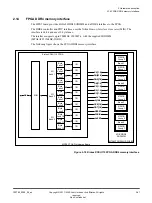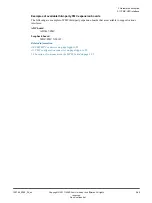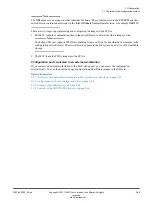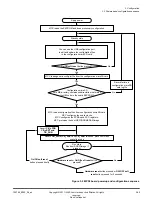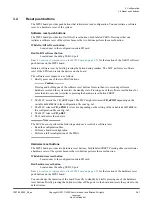
Note
• The availability of P
‑
JTAG, SWD, 16
‑
bit trace, and 4
‑
bit trace, depends on the design that you
implement in the FPGA.
• The Debug USB connector supports remote USB access to the MCC to enable remote reboot, remote
reset, and remote shutdown.
Debug over USB
Debug over USB supports:
• Four UARTs.
• MCC debug.
• CMSIS
‑
DAP.
The following figure shows the architecture of the debug over USB system.
MPS3 FPGA Prototyping Board
FPGA
UART0
UART1
UART2
UART3
MCC
USB-Serial interface
Port3
Port2
Port0 (MCC/FPGA0)
Port1 (MCC/FPGA1)
GPIO
UART0
CMSIS-DAP
CS_DBG
USB hub
Port0
Port2
Port1
Debug USB
Figure 2-25 MPS3 board debug over USB system architecture
Serial ports
The four user serial ports on the Kintex XCKU115 FPGA indicate the status of the system
during boot time. After the system has booted, they are used for debug or status information.
The four serial ports are concentrated into a USB
‑
serial interface that connects to a four port
hub, that is connected to the USB connector. The hub enables the four FPGA serial ports, the
MCC USBDBG port, and the CMSIS
‑
DAP controller to share the USB debug connector.
CMSIS
‑
DAP debug
The CMSIS
‑
DAP interface in the FPGA enables debug over USB to the FPGA CoreSight
components using the dedicated Arm CMSIS
‑
DAP controller.
Setting up host software for the hub and serial ports
The MPS3 board does not require software drivers for Windows 7 or later versions of Windows.
2 Hardware description
2.18 System debug
100765_0000_04_en
Copyright © 2017–2020 Arm Limited or its affiliates. All rights
reserved.
2-51
Non-Confidential





